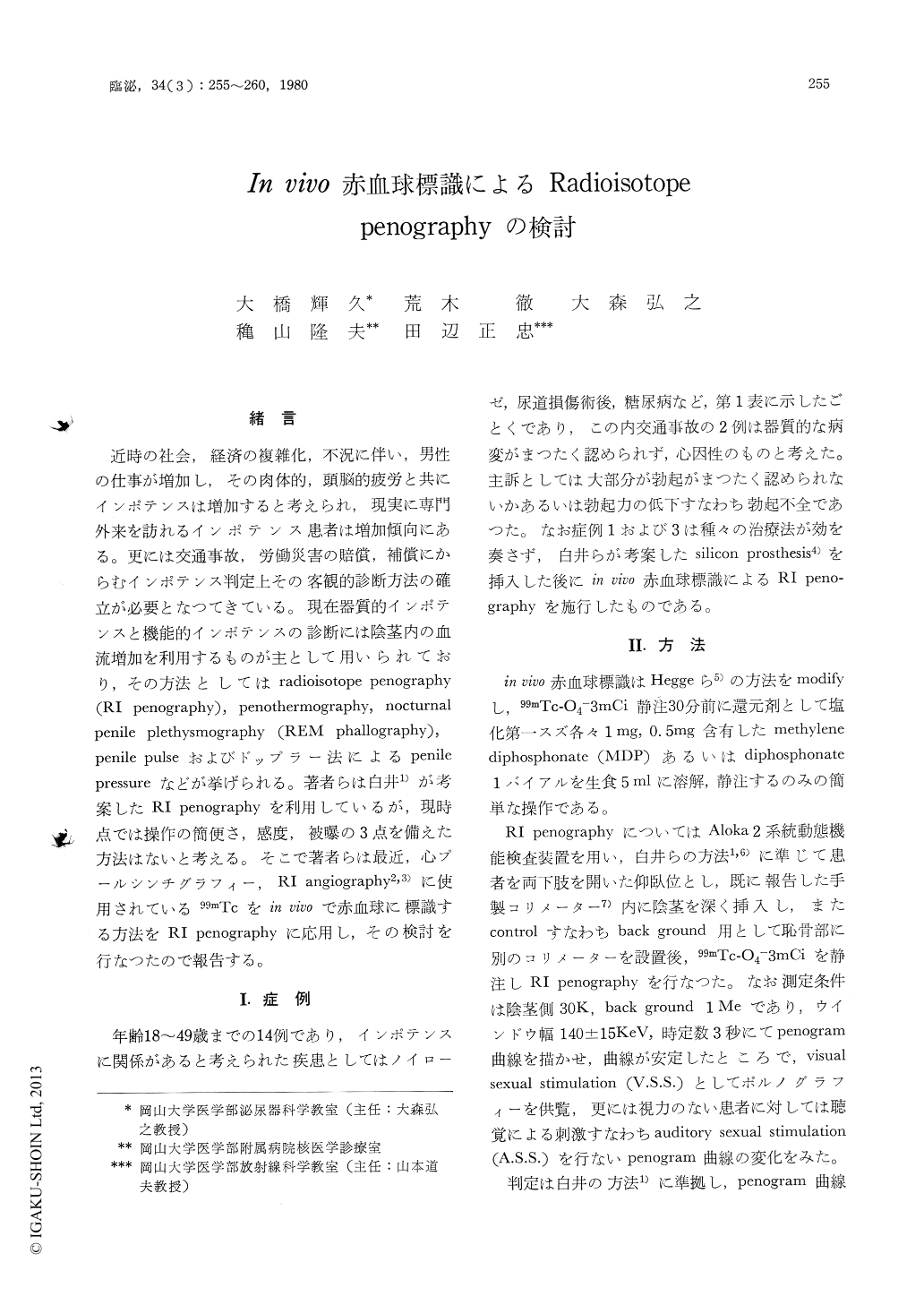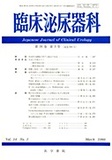Japanese
English
- 有料閲覧
- Abstract 文献概要
- 1ページ目 Look Inside
緒言
近時の社会,経済の複雑化,不況に伴い,男性の仕事が増加し,その肉体的,頭脳的疲労と共にインポテンスは増加すると考えられ,現実に専門外来を訪れるインポテンス患者は増加傾向にある。更には交通事故,労働災害の賠償,補償にからむインポテンス判定上その客観的診断方法の確立が必要となつてきている。現在器質的インポテンスと機能的インポテンスの診断には陰茎内の血流増加を利用するものが主として用いられており,その方法としてはradioisotope penography(RI penography),penothermography, nocturnalpenile plethysmography (REM phallography),penile pulseおよびドップラー法によるpenilepressureなどが挙げられる。著者らは白井1)が考案したRI penographyを利用しているが,現時点では操作の簡便さ,感度,被曝の3点を備えた方法はないと考える。そこで著者らは最近,心プールシンチグラフィー,RI angiography2,3)に使用されている99mTcをin vivoで赤血球に標識する方法をRI penographyに応用し,その検討を行なつたので報告する。
Radioisotope penography using red blood cells labeled in vivo with 99mTc was investigated in 14 impotent patients. In vivo labeling was performed using the method modified from that proposed by Hegge et al.: an i.v. injection one vial of methylene diphosphonate or diphosphonate in 5 ml of saline was given and was followed 30min. later by an i.v. injection of 3 m Ci of 99mTc-pertechnetate. There-after, radioisotope penography was performed using the method developed by Shirai et al.

Copyright © 1980, Igaku-Shoin Ltd. All rights reserved.


